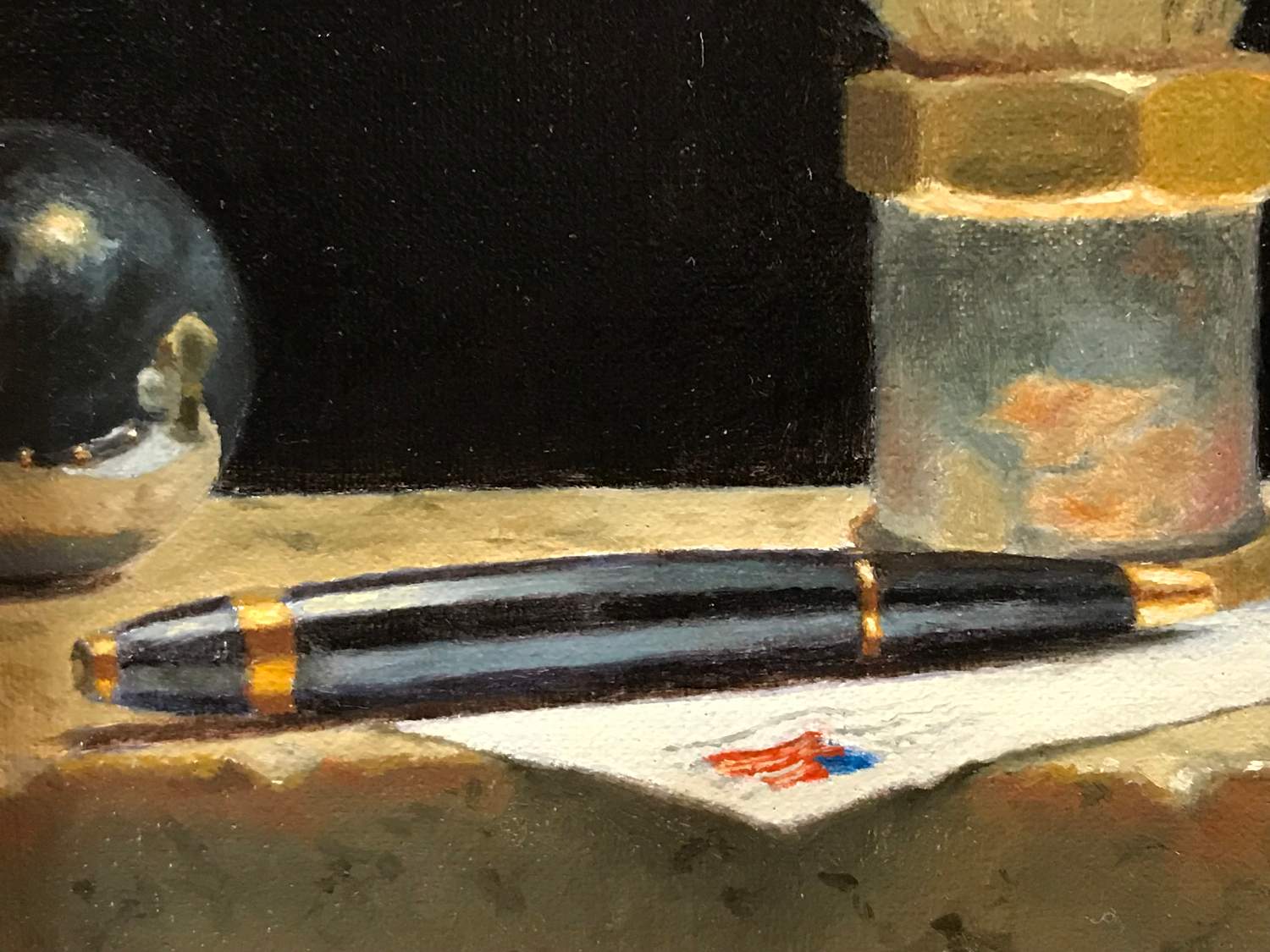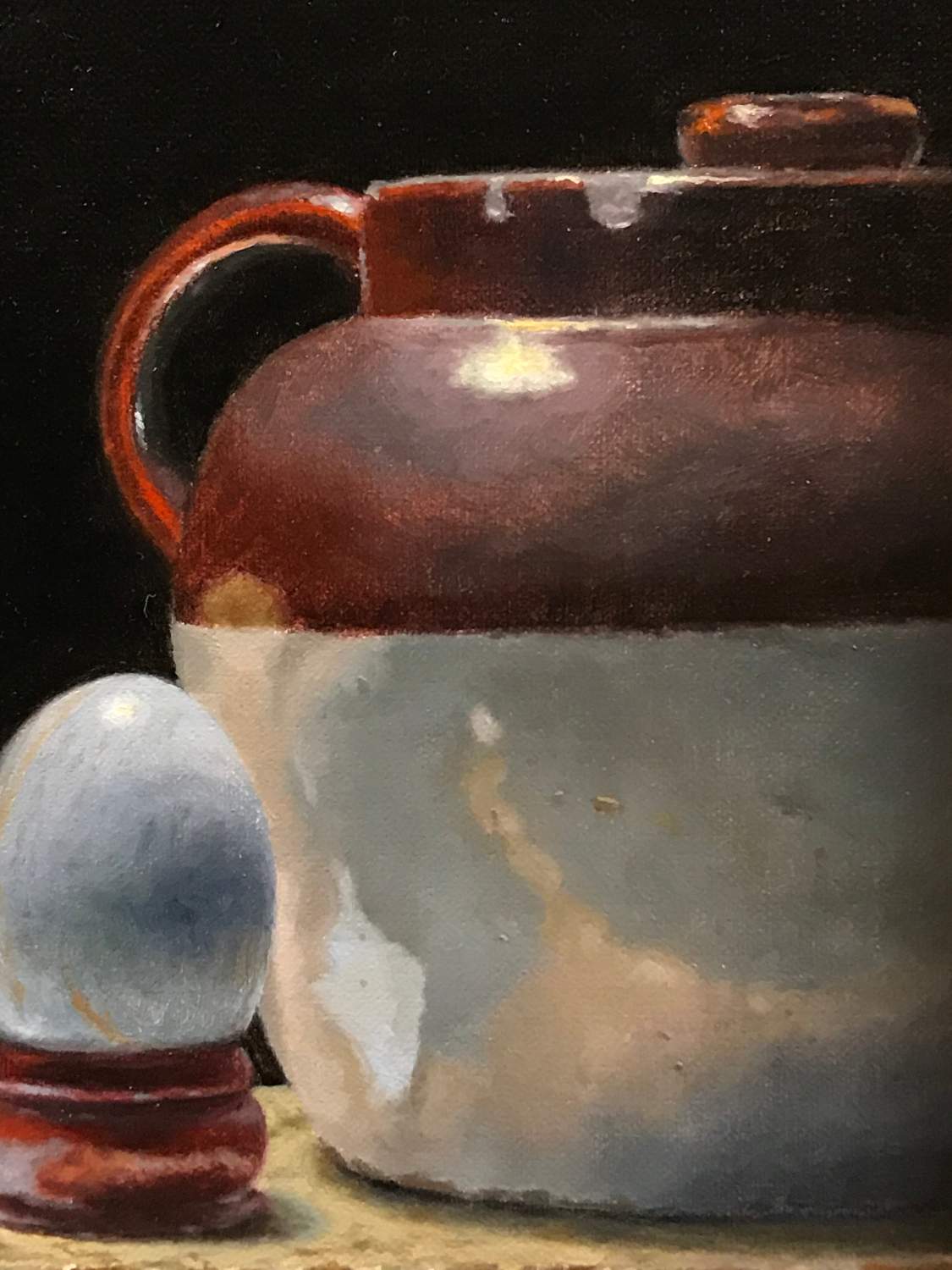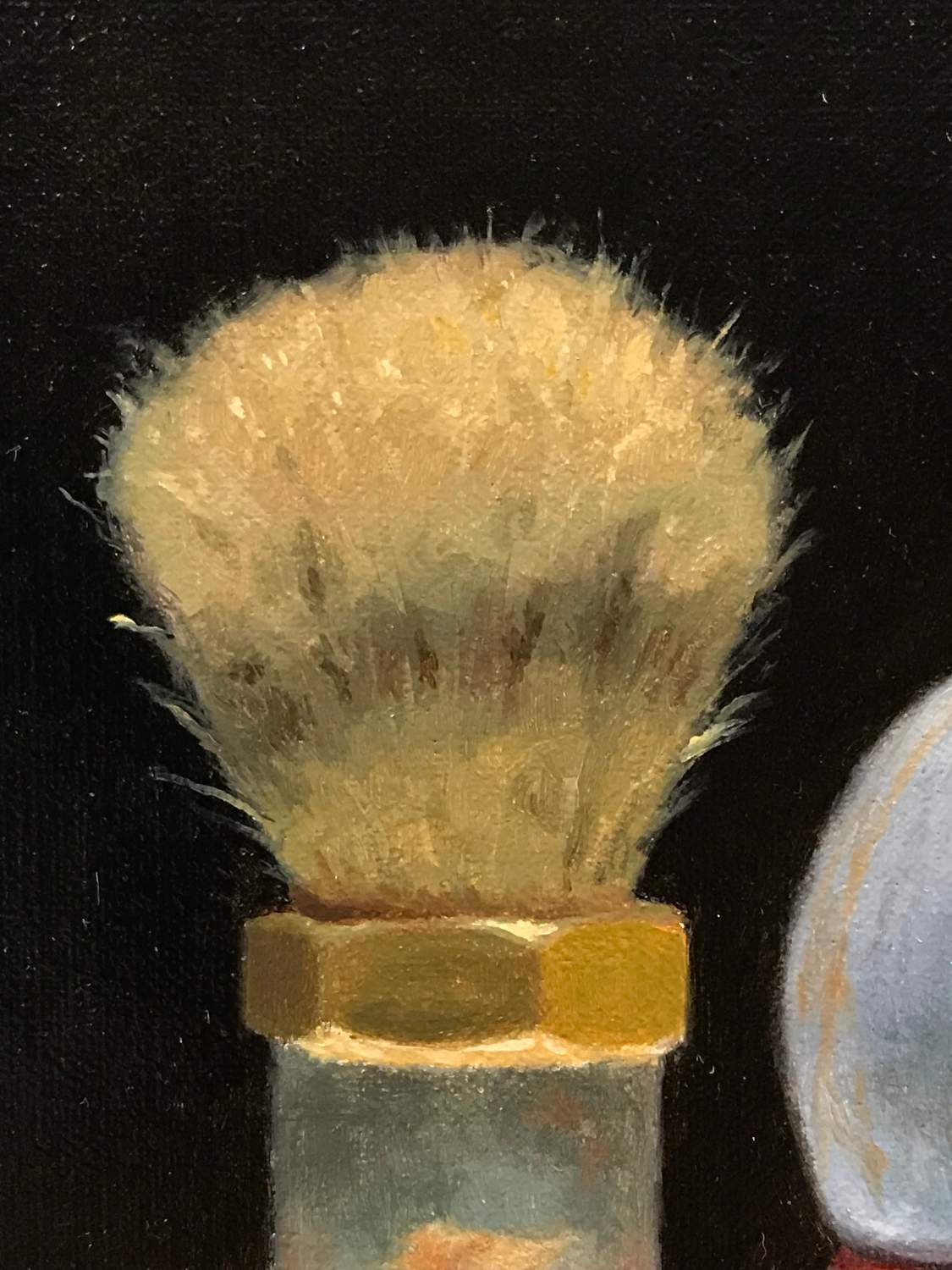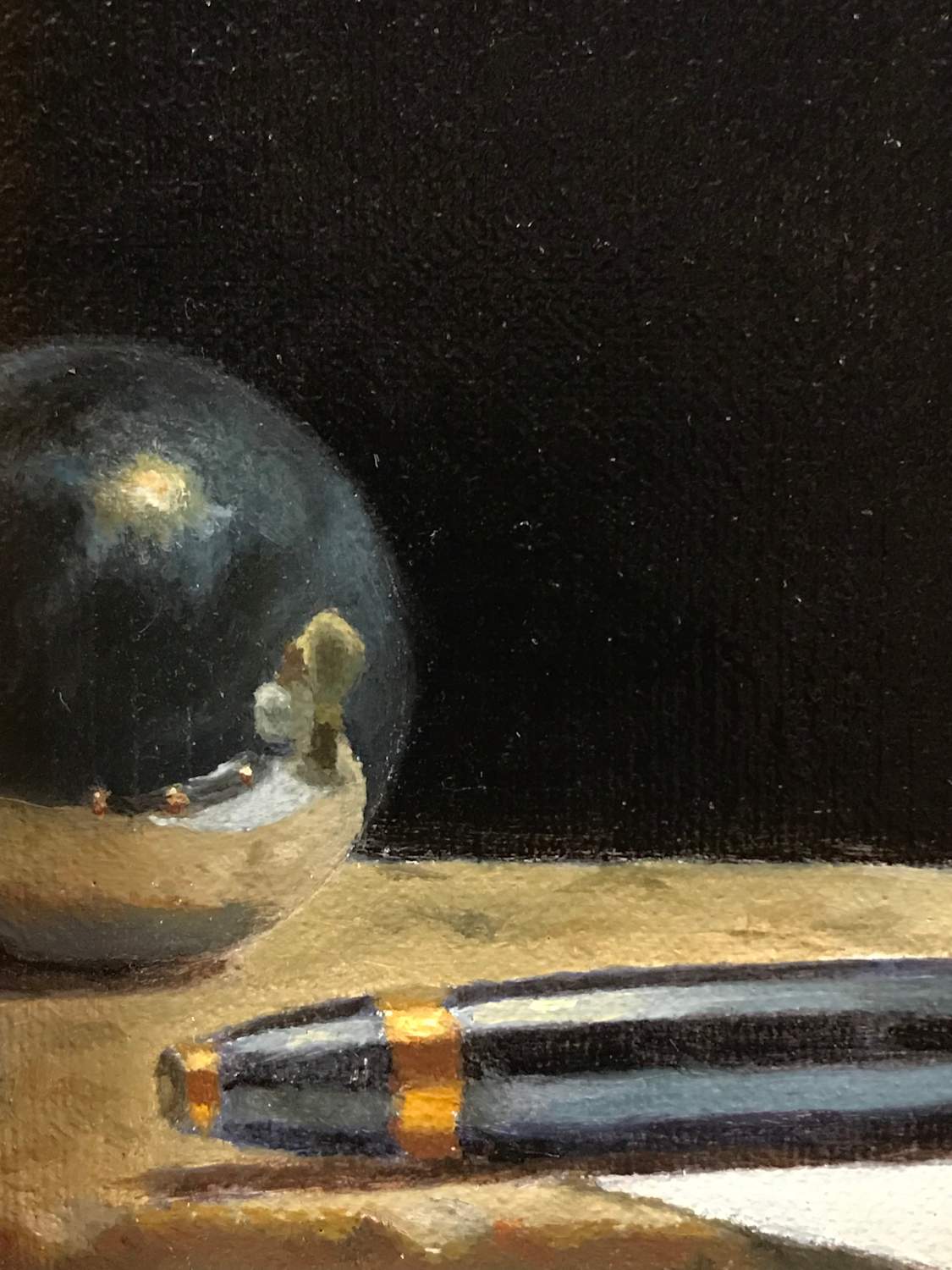Writing A Weekly Newsletter What I put into it, and what I get out of it

Oil on linen on panel, 8×10 inches / 20 x 25 cm
Every Saturday morning, like clockwork, an email goes out to my newsletter subscribers.
It has a new painting or an image of one I’m working on, some kind of commentary about the work or related subject, and usually a link to a blog post like this one.
I’ve been writing these newsletters in some form for nearly 15 years, though for much of that time it was on a monthly (or so) schedule.
About 5 years ago, I made a commitment to sending them on a weekly basis, and indeed for the last 3+ years have not missed a single week – more than 150 consecutive newsletters every Saturday morning.
An artist friend is considering taking up a similar discipline, and recently asked about it. After we talked, I decided a few others might also be interested, so here is what that process is like for me.

The first few days of the work week are just for painting – I’m at the easel all day long.
But during that time, I start to think about what the topic might be for the newsletter.
Finding the right topic is trickier than it seems.
Art is inherently a personal pursuit, so there is a certain amount of personal writing that goes along with it – usually about the inner landscape we all inhabit to some degree or other and the artistic experiences that happen there. On the other hand, I never want to be too personal – my life is profoundly uninteresting, anyway.
There are also three different audiences that read this newsletter – collectors, artists, and general art lovers.
Whatever topic I pick – and the way I write about it – should resonate with all three of those groups. That’s the main reason I never write much about technical topics. A few artists might be interested, but I don’t want to alienate other readers with a barrage of shop talk.
I do keep a list of potential subjects, but I actually rarely look at it – it’s usually better to write about whatever is percolating in my mind while I’m working.

When the right subject rises to the top, I know it right away, and I almost always end up writing about that idea.
So by Tuesday or Wednesday, I know the topic, and start to turn it over in my mind.
I don’t keep written notes, nor really spend much time thinking about it – just the outline of what I want to say – a few of the more important high-level points.
Towards the end of the week, I set aside one day for my newsletter and also scheduling my social media posts. In an ideal world, this would all be finished on Thursday. In the real world, I usually get to it on Friday, which is cutting it a little close for the Saturday morning delivery, but so it goes…

I used to agonize a lot about the actual writing – multiple versions, multiple revisions, multiple hours of grim effort… the real “Sweat, Blood, and Tears” approach.
Over time, though, I learned to adopt the “First Thought, Best Thought” attitude.
Now I sit down and just start writing – the first draft is usually finished in about an hour.
And surprisingly, that first draft is usually pretty good – I have to make many smaller changes and corrections, but I usually don’t have to do too much to the body of the text.
Between the writing, editing, and photographing the new painting, it’s between 4 and 6 hours of work.
Once that is done, I format it in my email software, schedule it for Saturday morning delivery, and enjoy the glow of momentary satisfaction before it all starts again.

I sometimes look at those 4 to 6 hours and think that the time would be better spent painting.
That might seem true, but communication is as much a part of the artist’s job as painting, and this newsletter is also the primary means of sharing new work with my collectors.
It is also immensely helpful in organizing my time – it’s the one thing I have to do every single week – and that discipline makes it easier to make sure other important things get done as well.
There is also a subtler motivation: Many artists say that the act of teaching helps to solidify their own understanding. While I don’t teach, I do find that the process of writing these newsletters forces me to sharpen and clarify my thoughts. Even if these newsletters don’t enlighten anybody else, I feel like I understand things just a little bit better.
And finally, I have heard from numerous subscribers that this newsletter has become part of their Saturday morning routine. They wake up, grab a cup of coffee or tea, and sit down to see my new painting and read the newsletter.
That gives me real delight, and more than once, it has motivated me to get busy when I really didn’t feel like doing it.
So, I thank you for reading… now I have to start thinking about next week’s topic.
Patreon A deeper look into my studio
If you’ve enjoyed being part of my artistic journey so far, I’d love to invite you to explore it more deeply through my Patreon page. For those who may not know, Patreon is a platform where creators like myself can connect more closely with supporters and offer exclusive content.
As a patron, you’ll get a closer look into my creative process, early access to new works, and insights into the techniques and inspiration that shape my paintings. It’s a space for us to dive deeper into conversations about art, exchange ideas, and build a vibrant community of fellow art enthusiasts who share this passion.
By joining me on Patreon, you’re not just supporting my work—you’re becoming part of an ongoing creative journey we can experience together. I’d love for you to visit my Patreon page, learn more, and consider becoming a part of this next chapter.
Click the blue button below.